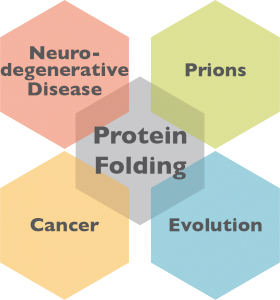Our work covers a broad range of topics unified by two overarching questions: how do proteins fold correctly, and what happens when they don’t? The amino acid sequence of a polypeptide ultimately determines its native conformation, but in the extraordinarily crowded environment of living cells, many proteins either fail to fold or don’t remain properly folded for long, resulting in dysfunction and aggregation.
Not surprisingly, biological solutions to this problem are ancient and conserved. We employ a combination of biochemistry, cell biology and genetics, moving back and forth between simple and complex organisms. As the importance of protein homeostasis in human biology and medicine has been revealed, our work has increasingly moved in a more translational direction. We’ve made significant advances in areas as diverse as cancer, neurodegeneration, and infectious disease.
Perhaps the greatest surprise coming out of our work, is the discovery that protein homeostasis stands squarely at the interface between genetic variation and the production of new biological traits. We have explored two protein-based mechanisms – the chaperone activities of Hsp90 and the conformational changes of prion proteins – operating at this interface. Both utilize genetic variation in a complex, combinatorial fashion to rapidly produce heritable phenotypic diversity. They do so in very different ways, yet each provides a conduit between genetic variation and biological novelty that is regulated by environmental contingency.
More detail on each of the projects within the lab is listed below.

